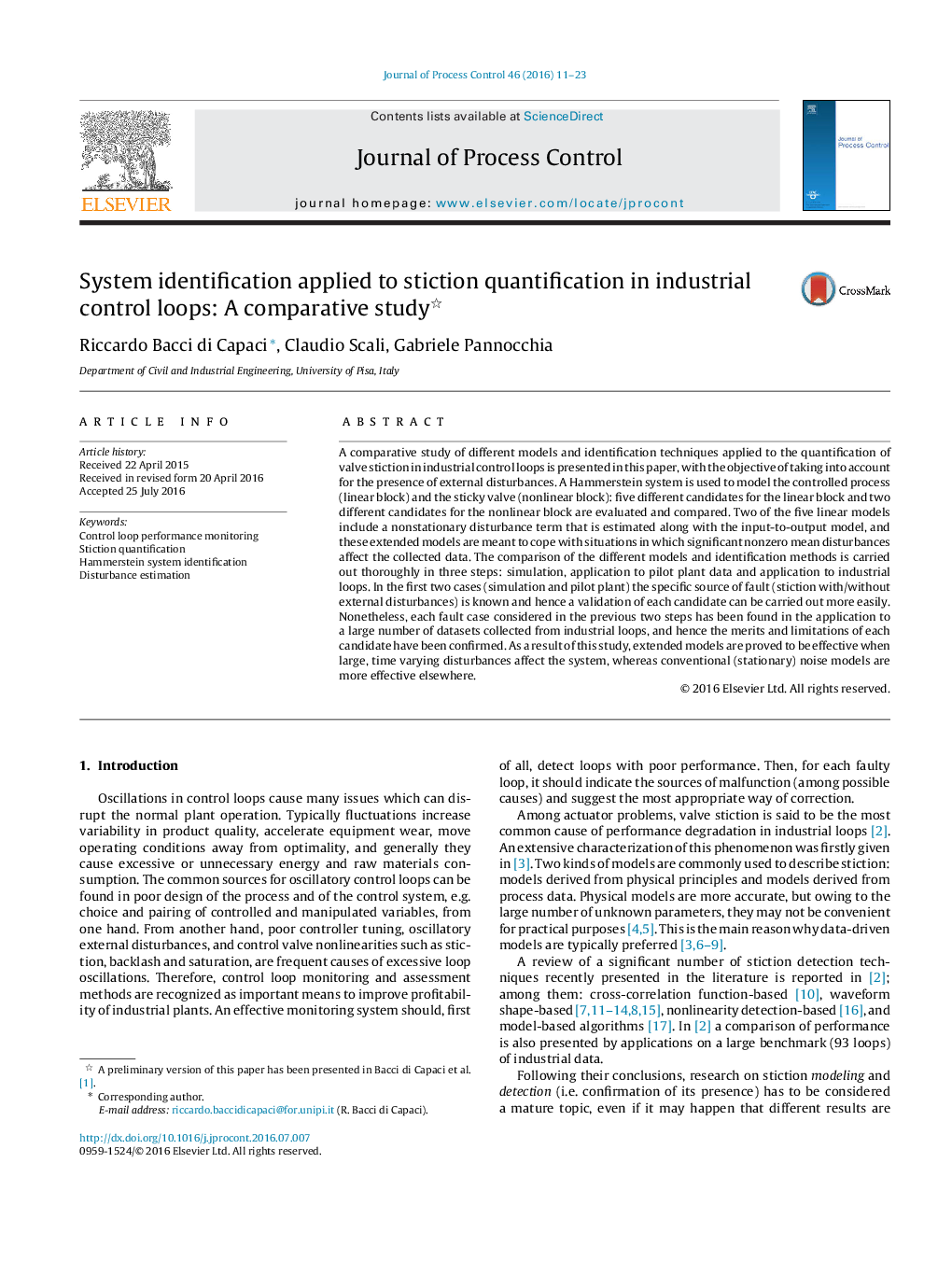| کد مقاله | کد نشریه | سال انتشار | مقاله انگلیسی | نسخه تمام متن |
|---|---|---|---|---|
| 688617 | 1460357 | 2016 | 13 صفحه PDF | دانلود رایگان |
• Stiction quantification – possibly in the presence of external disturbances – is addressed.
• Two stiction models and five linear process model are compared.
• Different control loops are studied: simulation, pilot plant and several industrial loops.
• Consistent and reliable results are obtained for all different cases.
• Linear models which imply an external disturbance term are the best choice when disturbance is predominant over stiction.
• Simpler linear models should be preferred in the case of only valve stiction.
• Repeated analysis for the same valve allows one to follow evolution of stiction, to disregard bad estimates, and to schedule valve maintenance.
A comparative study of different models and identification techniques applied to the quantification of valve stiction in industrial control loops is presented in this paper, with the objective of taking into account for the presence of external disturbances. A Hammerstein system is used to model the controlled process (linear block) and the sticky valve (nonlinear block): five different candidates for the linear block and two different candidates for the nonlinear block are evaluated and compared. Two of the five linear models include a nonstationary disturbance term that is estimated along with the input-to-output model, and these extended models are meant to cope with situations in which significant nonzero mean disturbances affect the collected data. The comparison of the different models and identification methods is carried out thoroughly in three steps: simulation, application to pilot plant data and application to industrial loops. In the first two cases (simulation and pilot plant) the specific source of fault (stiction with/without external disturbances) is known and hence a validation of each candidate can be carried out more easily. Nonetheless, each fault case considered in the previous two steps has been found in the application to a large number of datasets collected from industrial loops, and hence the merits and limitations of each candidate have been confirmed. As a result of this study, extended models are proved to be effective when large, time varying disturbances affect the system, whereas conventional (stationary) noise models are more effective elsewhere.
Journal: Journal of Process Control - Volume 46, October 2016, Pages 11–23
